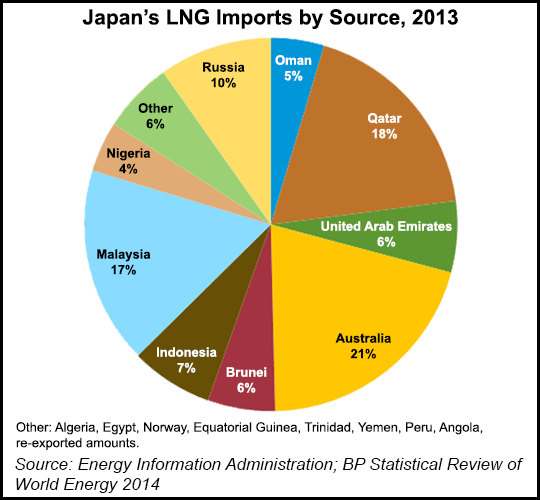Japan Biggest 2014 Lender to LNG; U.S. Projects Get Large Share
Last year was one of the best years for bank participation in financing of liquefied natural gas (LNG) projects around the world, according to a new report from LNG specialists Poten & Partners. Lending volume was bolstered substantially by backing for U.S.-based projects, Poten said.

Japanese banks occupied five of the slots among the top 10 lenders, according to Poten. European banks rounded out the top 10. Japanese banks provided more than $5 billion to LNG projects last year, or about 43% of the $12 billion lent during the year. “This amount, which came from 11 Japanese lenders, jumps by a significant $6 billion once direct lending from the country’s export credit agency, the Japanese Bank for International Cooperation, is included,” Poten said in a note.
Participation in U.S. LNG project financings largely determined the rankings because the bulk of the funds supplied by banks in 2014 primarily went to support two large U.S. liquefaction projects, the firm said.
These projects account for $4.9 billion of bank debt for the Sempra Energy-led 13.5 million tonne per annum (mtpa) Cameron LNG project, which was agreed in August, and about $5 billion in bank debt agreed in November for Freeport LNG trains one and two, which will produce 4.4 mtpa apiece. Louisiana-based Sabine Pass Liquefaction also obtained a $325 million letter of credit from banks in April 2014, which will be used for working capital requirements across the four trains currently under construction, Poten said.
“The strong support for the U.S. projects from Japanese financiers is due to the considerable presence of the country’s companies as equity partners and offtakers/tolling capacity holders and construction contractors on the U.S. schemes,” Poten said.
Besides banks, GE Capital also made it into the ranking of top lenders, as did Metropolitan Life and Australia’s QBE Insurance.
© 2024 Natural Gas Intelligence. All rights reserved.
ISSN © 1532-1231 | ISSN © 2577-9877 |
